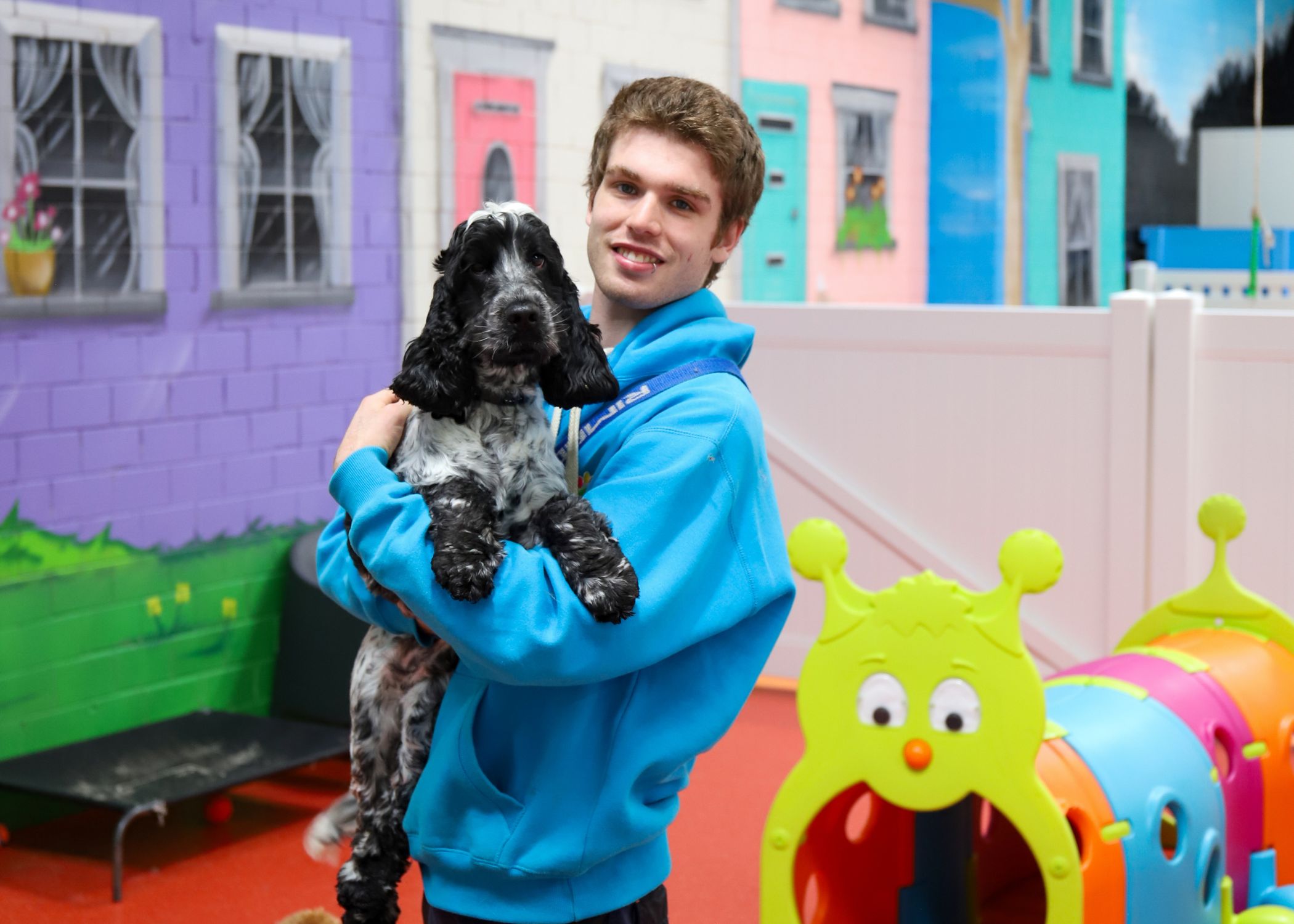
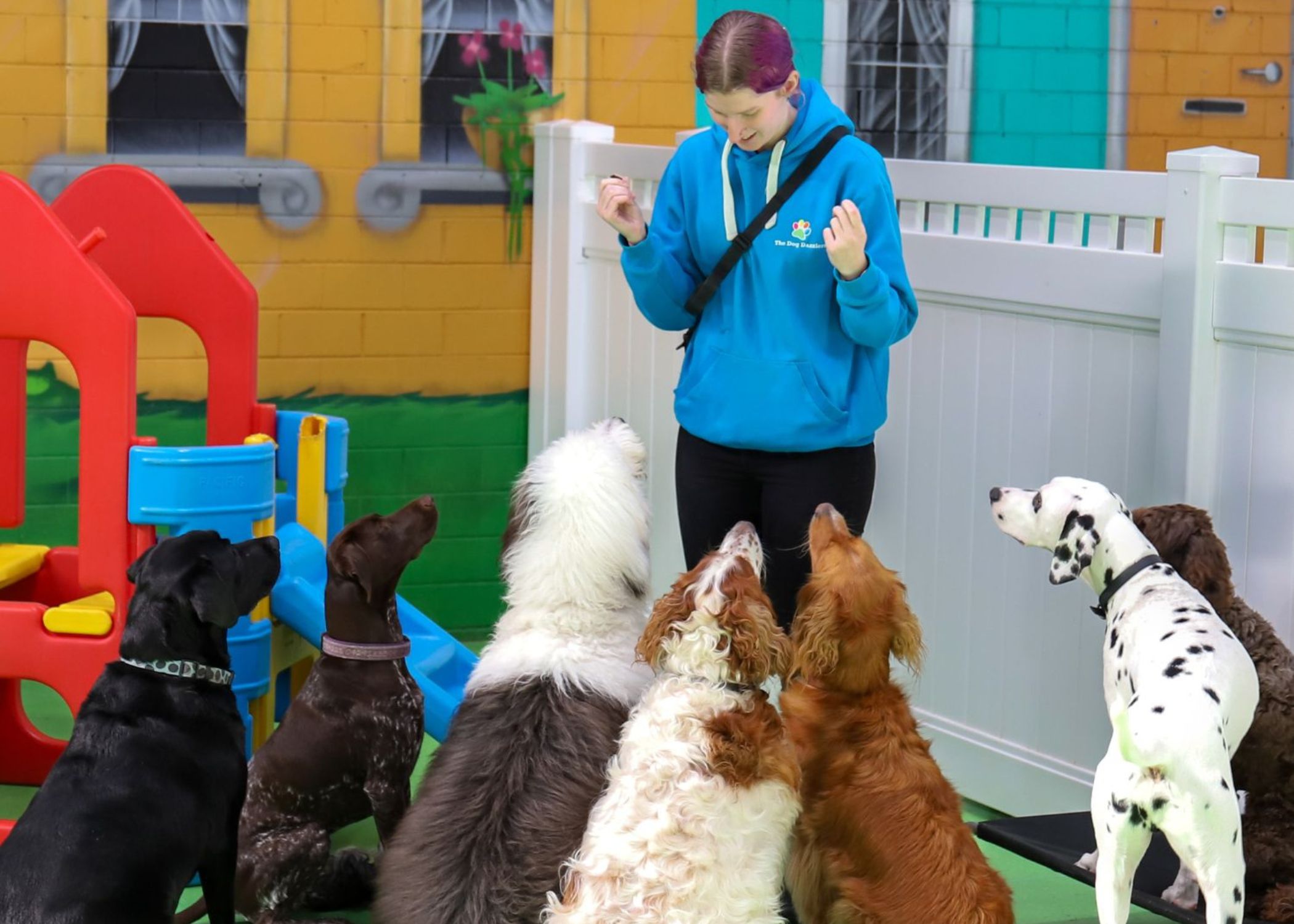
A dog really is man’s best friend. They’re our loyal companions, devoted cuddlers and a source of constant entertainment. But have you ever thought about how important we are to them, too? We’re more than just their food givers. We’re their best friend and a comfort to them whenever they need it. When we’re not around, dogs can be susceptible to developing separation anxiety.
Different dogs deal with separation anxiety differently. Some may become a little more vocal and others can be destructive and totally change their usual behaviour. It’s distressing for the pup and for us to witness it.
So, what exactly is separation anxiety? How can you know if it’s affecting your pooch? And how can dog daycare help?
Here’s everything you need to know!
Dogs can suffer from different kinds of anxiety. Moving home, redecorating, a new kid or a boisterous pup at the dog park can all cause pups to become anxious. Separation anxiety, however, only happens when you leave them. They fear being left alone, what will happen to them and if you’ll ever come back.
Separation anxiety is one of the most common behaviour disorders affecting dogs, and it can be very difficult for the pup’s parent to manage. Rather than being sad or introverted, which is often a sign of regular anxiety, separation anxiety can result in panicked behaviour. They may completely destroy furniture, forget they’ve been potty trained and even get aggressive.
Different dogs develop different symptoms of separation anxiety. If you’re worried because your dog starts acting strangely, take them to a vet or behaviour expert for advice.
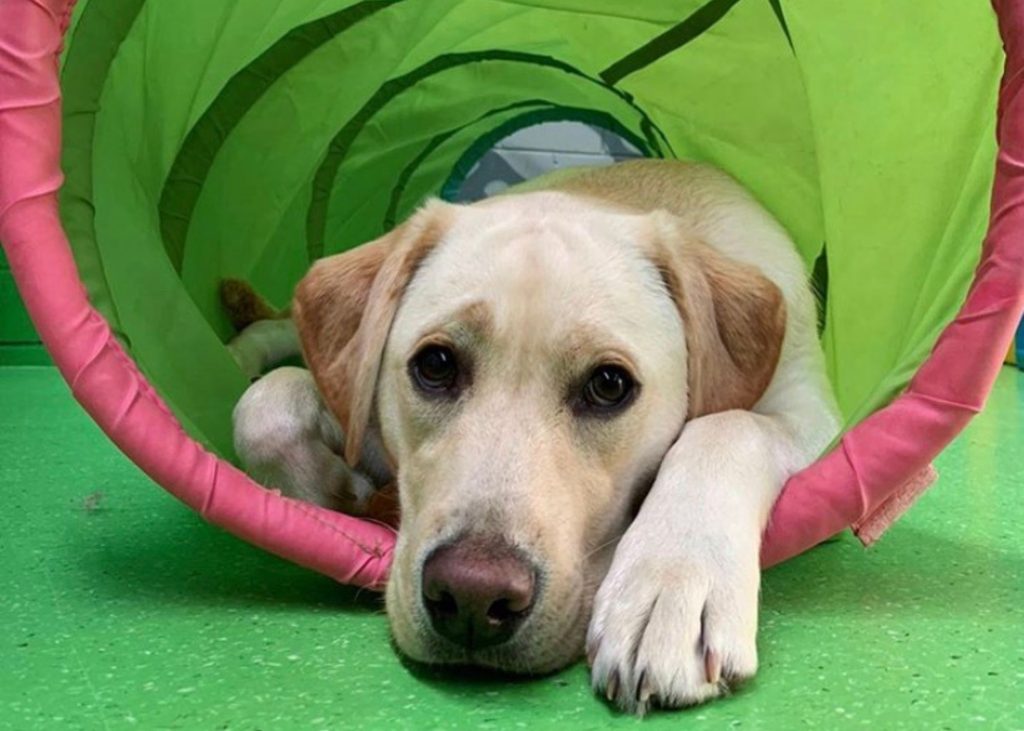
Apart from looking out for the above symptoms, there are a couple of other tell-tale signs that separation anxiety is the problem.
Pups often display this unique behaviour when the pup parent is preparing to leave. Grabbing the car keys, making lunch and putting on your coat before you go out the door, can all make your pup anxious. They may start to howl, shake or destroy items close to them to get attention in a bid for you not to leave.
A tricky thing about separation anxiety is that it might not happen every time you leave your pup alone. It might only happen during the week or if you leave again after already coming back. Some dogs may associate specific locations with separation anxiety, such as kennels if they had a particularly bad experience.
Not all of these scenarios will cause your pup to develop separation anxiety. It really depends on your dog’s unique personality, their history and your relationship.
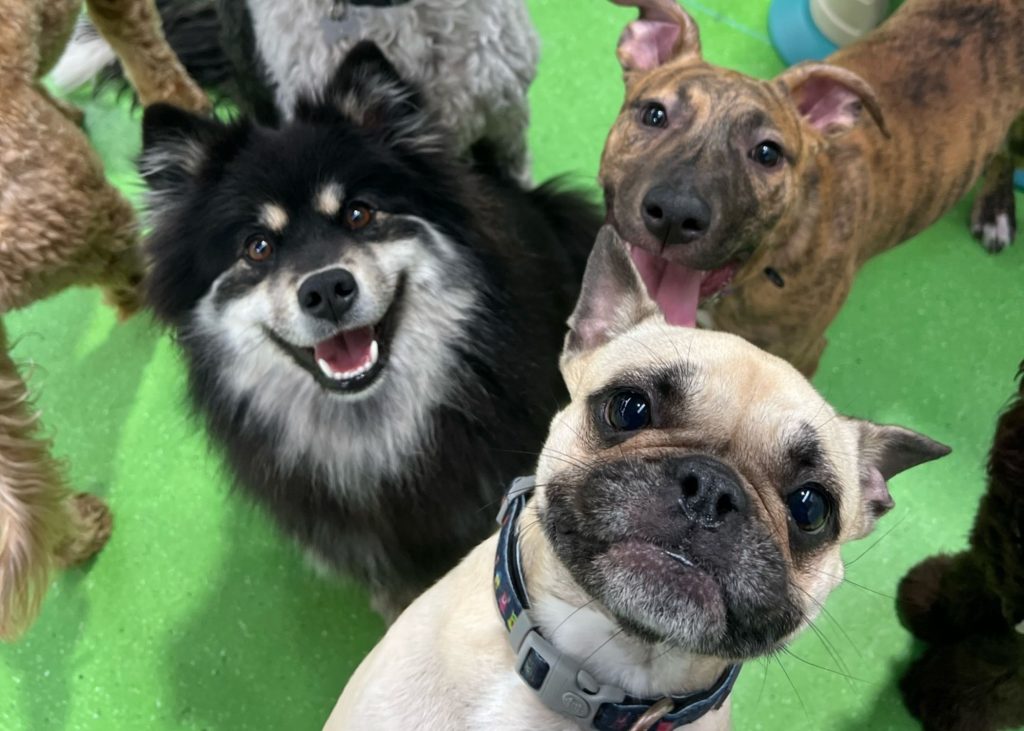
Older pups are more likely to deal with separation anxiety as it’s harder for them to adjust to new and changing surroundings. At The Dog Dazzlers, our purpose-built dog daycare facility is ideal for mature pups. Older dogs that come to dog daycare and might feel a little anxious about leaving their owner can benefit from designated areas where they can relax and be pampered by our experienced team.
There are lots of little things you can do to help calm your pup whenever they need to spend some time alone. Starting these when they’re young can help to minimise the likelihood of them developing separation anxiety in the future.
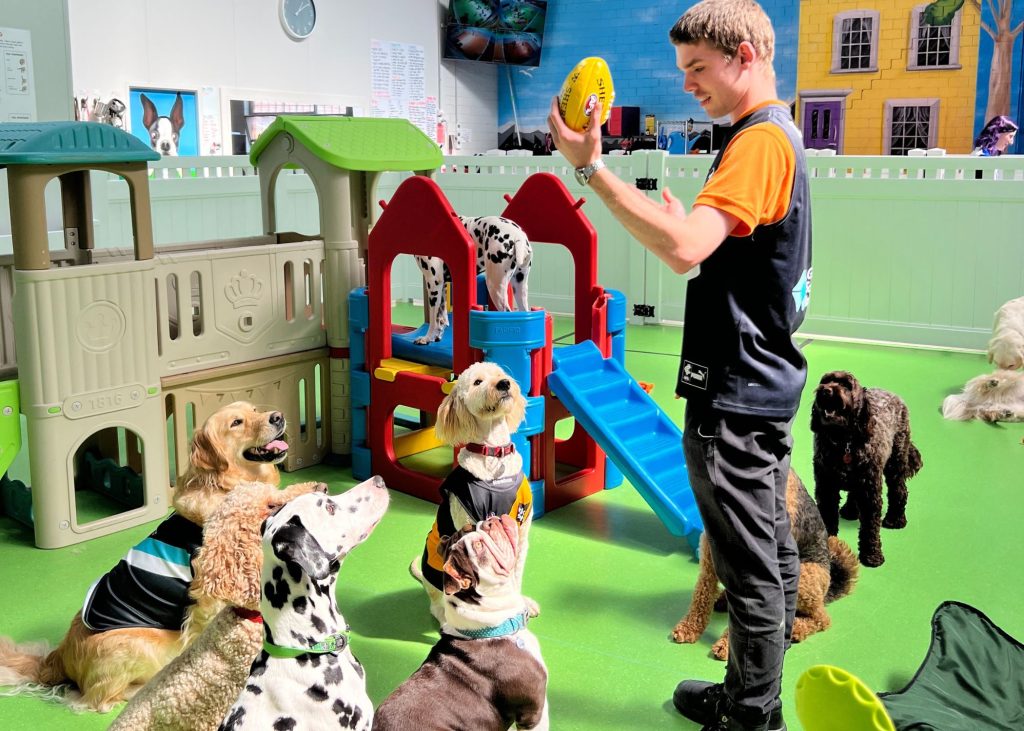
Bringing your pooch to dog daycare is one of the best ways to ensure they’re calm, happy and looked after while you’re busy. Our state-of-the-art facility will ensure your dog is stimulated and entertained during the day so that they’re excited – but not clingy – when reunited with you in the evening. Contact The Dog Dazzlers to enrol your pup into doggy daycare. It’s the perfect day out away from home!
Based in Burwood, our purpose built facility provides pups with all their daycare and grooming needs – find out more now:
Based in Burwood, The Dog Dazzlers are the local dog grooming and doggy day care facility for pups all across Melbourne. Our purpose built, light filled premises is the home away from home for dogs of all shapes and sizes. Get in touch with us now so we can help your pup look good and feel great!
If you’d like to find out more about anaesthesia free dog teeth cleaning, visit Canine Dental.
Whether you’re looking for Dog Grooming, Doggie Daycare or some new Dog Toys and Accessories – the team at The Dog Dazzlers look forward to hearing from you!
© The Dog Dazzlers 2015 – 2024 | Website by Elevate Websites
If you’d like to book your furbaby in for a groom, please give us a call on 03 9808 3289, or complete the form below and we’ll get back to you as soon as we can!
All existing clients can book in below, and new clients can register their dogs for daycare.
If you have any questions, please call us on 03 9808 3289.